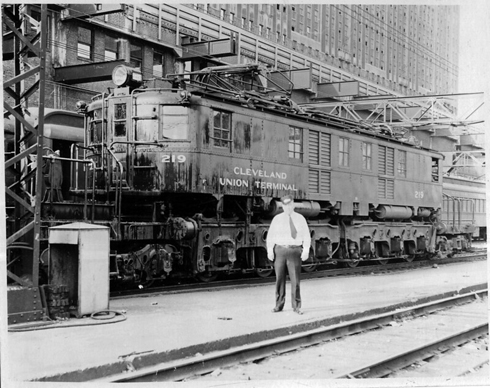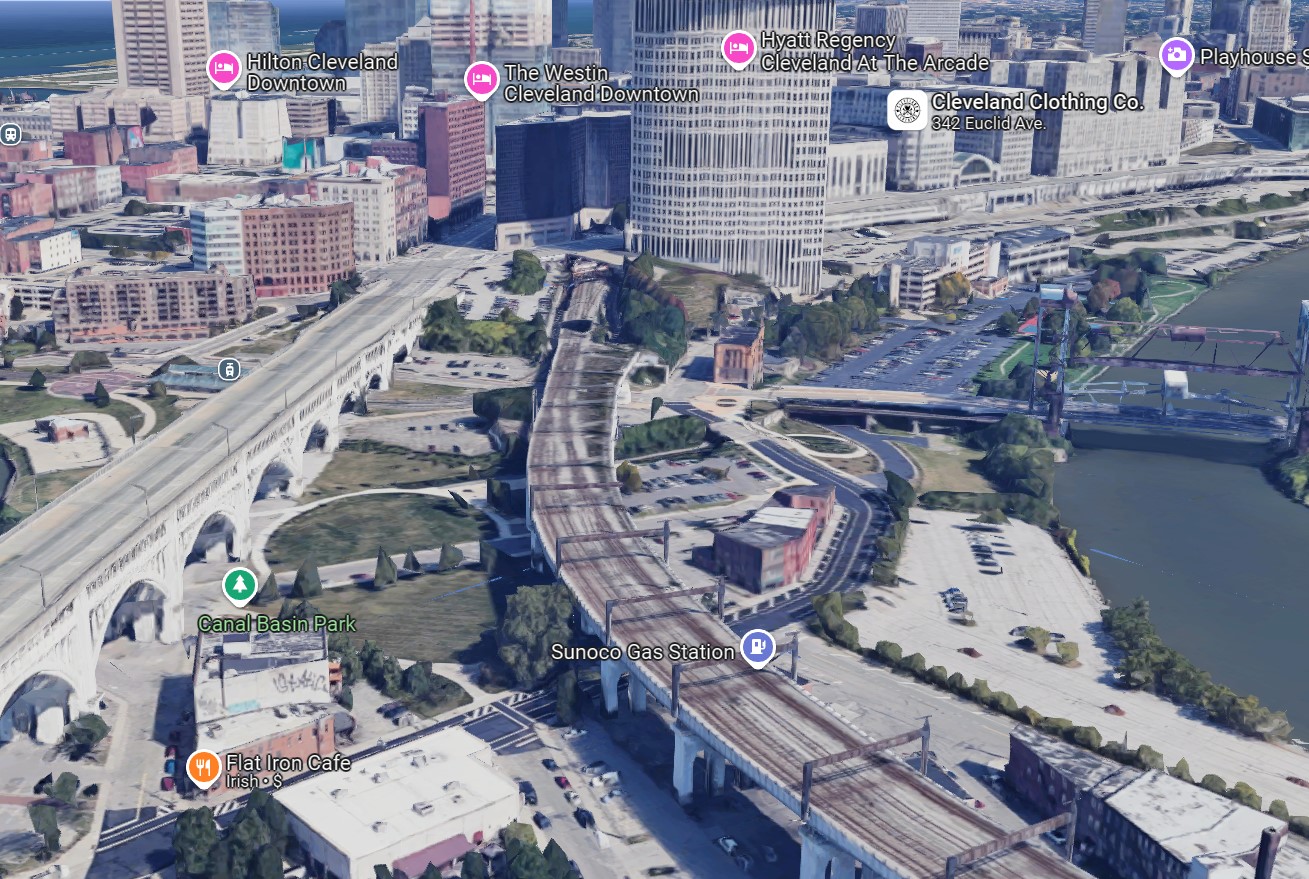


Framed or unframed, desk size to sofa size, printed by us in Arizona and Alabama since 2007. Explore now.
Shorpy is funded by you. Patreon contributors get an ad-free experience.
Learn more.

- Lofty addition
- In 1912
- Keenan Building
- Six years old
- Taken from the P.J. McArdle Roadway?
- It stood only 47 years
- Three track mind
- Incline to the right
- Reach for the sky, 1912 style
- No clean sweep
- Same Job Title, Same Face
- Sadly Lost
- Beautiful ...
- Where you get your kicks
- Aim High
- Pueblo Revival sisters
- Pueblo Neoclassicism
- Milk Man
- Regional dialect.
- Spielberg's inspiration
- Great Photo
- Loaf Story
- Do you still have the Rakes category?
- Could almost be a scene from the 1957 movie 'Hell Drivers'
- The Wages of Fear.
- Conspicuous by their absence
- Got Milk?
- All that aluminum
- No lefties
- Smoke 'em if you've got 'em
Print Emporium
Heart of Cleveland: 1950

Summer 1950. "Heart of downtown Cleveland, Ohio, and Union Terminal Group (Terminal Tower and Hotel Cleveland)." Gelatin silver print by Carl McDow. View full size.
Catenary Supports
The overhead lattice structures over the trackage on the bridge were there to support catenary wire that carried 3000 volt DC current to power the electric locomotives used in Cleveland Union Terminal to comply with smoke abatement concerns. These locomotives or 'motors' were used until 1954 when they were modified to run off the 600 volt third rail in the New York City trackage into Grand Central Terminal.

Just a Little Before I was Born
This would have been a vista of what my dad saw when in worked in Cleveland during 1948 and 1949. He met my mother in 1948 in Parkersburg, WV where they both lived. Dad got a job in Cleveland working at a key plant. He would hitchhike home from Cleveland every Friday evening after work to see my mother and hitchhike back to Cleveland on Sunday. There was no I-77 back then. Only U.S. Route 21. I’ve heard many stories about how long it took Dad to make it home to Parkersburg. Mother became a lifelong Cleveland baseball fan in 1948 when the Indians won the series. Chief Wahoo stood watch at her casket, and I still possess the Cleveland Indian pinback button Dad gave to my mother in 1948.
Patrick
Afternoon normal
Afternoon rush hour getting underway as West Siders flood the Detroit/Superior Highlevel bridge. On the Cleveland Union Terminal Railroad, a streamlined Chesapeake & Ohio sleeper is getting set over to build the Nickel Plate's Cleveland-St. Louis train #9. The NKP will take the sleeper as far as Fostoria where it will join the C&O's "Sportsman" heading toward the Greenbrier resort. The sleeper will return to Cleveland via Columbus, Ohio, on the New York Central. In the flats, we see the yellow brick towered B&O station that lost its trains when the B&O moved the "Cleveland Night Express" and "Washingtonian" into the CUT. There is room on the near side of the CUT viaduct for additional tracks, and by 1960 the Cleveland Transit System will use that space for the cross-town Rapid Transit system.
The Flat Iron Cafe survives
There have been many changes since this 1950 photo, but the Flat Iron Cafe (bottom left corner) is still there. Its profile says it's an unpretentious brick-walled tavern with live music. I suspect its younger patrons have no idea what a flat iron is.
Click to embiggen

























On Shorpy:
Today’s Top 5